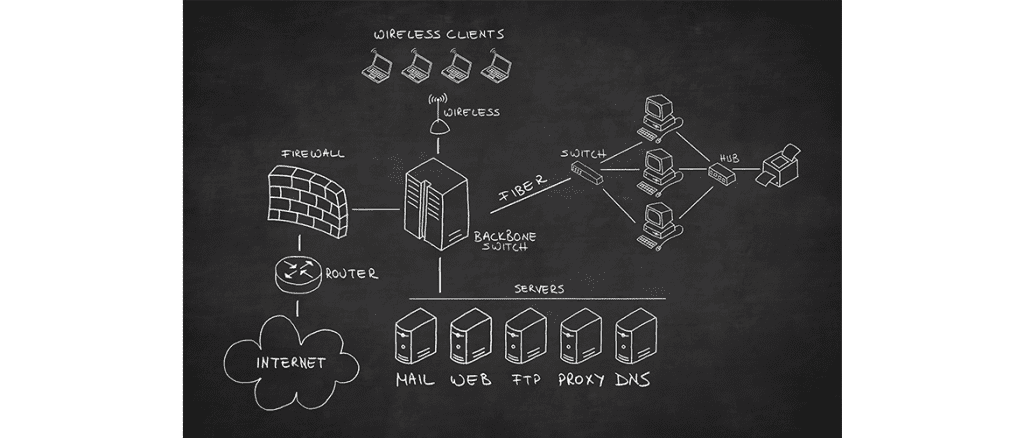Customer Service

With the advent of Ethernet-enabled devices and the continuous growth of Industrial Internet of Things (IIoT), the promise of remote connectivity seemed to be the solution to many of the problems facing Industrial Automation users. For engineers, the ability to remotely connect to PLCs, PCs and other devices means that remote sites can be serviced and fixed quickly when there is a problem. . For end users such as plant managers, data can be collected from multiple sites to ensure maximum efficiency of those plants. Until recently, security issues and the necessary firewalls have prevented this from being reality.
Connecting machines such as PLCs via a Virtual Private Network (VPN) allows customers to identify errors, troubleshoot, and maintain their machinery with minimal interaction with service providers. The IT department on-site does not need to make elaborate changes in their firewalls to accommodate this external traffic. In addition, remote connections enable the gathering of data for predictive maintenance so that problems can be identified before a breakdown occurs. Failures can also be flagged by emails and SMS messages so that the correct personnel can be notified immediately.
Most devices are now networked whether within an office or plant. Extending that network outside of the internal network allows engineers and services to communicate. This is achieved through a Virtual Private Network(VPN). Traditionally, this would have required the IT department of each site to configure a secure hole for each external connection which would have been very time consuming and labour intensive.
A VPN router solves this by taking away the involvement of the each site’s IT while ensuring security and limiting communications to only devices on the router and no other devices on the internal network.
Ewon (HMS)
Redline
Banner
What are some of the challenges stopping customers from connecting their machinery and devices to the internet?
1. Remote Connection Security
Challenge: End customers are typically concerned with intrusions into their network as well as malicious attacks on their equipment (eg. cyber attacks, malware…etc). Therefore, many are reluctant to adapt remote access technology.
Solution: Our products have security features such as encryption and two-step verification, which ensures that only authorized personnel can access those connected devices. Encryption generally encompasses the SSL/TLS protocol, which is a common encryption tool. Management can also restrict and manage access level for users to minimize unauthorized access. In addition, our products typically have firewall capabilities that determine which devices are accessible. Our products meet accepted security standards such as ISO 207002 and IEC 62443-2-4.
2. Connecting older connection technologies
Challenge: In the past, many devices only had serial communications and were meant for local networks and at very low speeds. It was never designed with ethernet capabilities in mind. These devices would not allow for communications to newer controllers which are mostly ethernet-based.
Solution: Our VPN devices can convert serial to ethernet so that these devices can be accessed over the internet.
3. Remote Access Installation
Challenge: Customers believe that installing remote access is complicated and requires extensive training.
Solution: Remote access is hassle-free and quick to achieve, therefore, very little training is required. E.B. Horsman & Son can assist with product selection, installation, training, and provide post-sale support.
4. Remote Access Devices Capabilities
Challenge: Most customers are not aware of the full capabilities of remote access devices and therefore, it’s not fully utilized.
Solution: While remote access devices can achieve data collection, the same device can also be used for troubleshooting and commissioning. This allows customers to utilize the full value of the product. E.B. Horsman will carry out full analysis of your remote access needs, existing devices, and achievement goals to recommend products best suited for you. We also offer training so that you understand the devices you are using and what you can do with it.
Internet access on-site
Depending on what’s available, there are different connection technologies that can be used. Wired LAN access is ideal as it is less costly and provides highest bandwidth. Another option is cellular connection which does not require physical connection to the end customer’s site, but data plans cost more and bandwidth will be lower.
Bandwidth requirement depending on what needs to be accomplished
For remote troubleshooting that requires moderate amount of data, the bandwidth can be small. If it is for data acquisition and if high frequency data is required, the bandwidth would need to be much higher. Ask us for your bandwidth recommendation.
Security requirement on-site
End-customer’s security policies determine if the site can have LAN connectivity or cellular connection and which is required. Most challenging part of industrial remote access is meeting site’s firewall requirements. Regardless, we have a solution for each security requirement.
Equipment and devices of interest
The end-user needs to determine which industrial devices and equipment will be monitored and accessed remotely. Are they PLCs and VFDs with built-in I/O or is it a standalone I/O? Regardless, must know IP address of each device and whether they are on the same subnet or not.
Software customization
There are many options for remote monitoring whether it is through a smart device such as a phone or connection to an application on a PC, which determines how much software development is required. Do you want to develop your own application or are you happy with preconfigured objects? Our PAC group can help you customize your remote access software package based on your needs and requirements.
Package requirements and add-ons
You need to determine what additional features you would like in your industrial remote access. Features include but are not limited to: SMS/Email notification; alarm acknowledgement; remote control of HMIs and PCS using VNC and RDP.


The Process, Automation and Controls Group (PAC) at E.B. Horsman can help you select the router that best suits your needs, provide product demonstrations, technical support in installation and setup, and offer product training. Contact us now for any inquiries:
Customer Service
1.888.467.7626